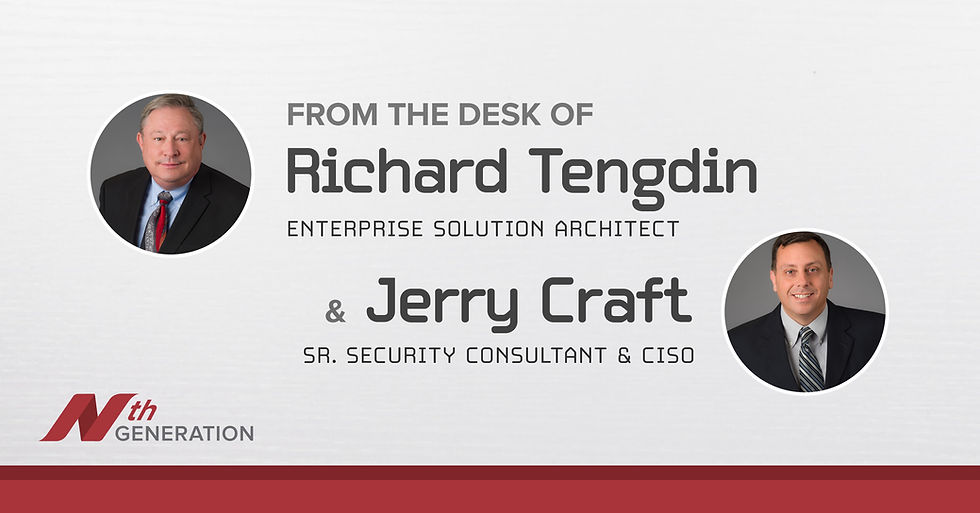What’s your data protection backup plan?
- Nth Generation

- May 6, 2020
- 3 min read
Updated: Jun 18, 2020

Redundant power supplies, RAID protected storage, and extra virtualization hosts are all standard ways we provide reliable IT services to our users, but where is data protection on the list? It’s usually missing in action for most companies. Data protection is an insurance policy you hope you’ll never need. Companies often give it short shrift at budget time and assign junior staff as operators.
What can happen if data protection is an afterthought?
When Microsoft Exchange Server was first released, a local health care organization rolled it out to their Senior Executives. The Architecture group stood the server up, migrated the executives to the new platform, then tossed the solution over to the Operations group for management. The backup integration wasn’t done by the Architects, so the Operations group just added the servers to existing backup jobs. Nine months later the exchange database was damaged, so Operations went to restore from tape. There were no database backups. Backup job warnings on locked files on file servers were so common they were ignored by the backup team.
Enterprise backup must scale with workloads.
A well-planned backup solution design looks at applications, platforms, data volumes, protection requirements, and time windows to create the design. Once the solution is deployed and tuned, companies typically go on with business and assume the solution will simply adapt when a new project requirement is announced to IT. When internal departments need another 25% added to your primary storage and hypervisor farm, they don’t come with another 6 hours in the day to complete backups. A well-architected backup solution will come with design rules for when more resources must be added. It’s easy to add more backup licenses when you add a host, but you’ll need to add more data movers and backup storage when you expand the data being protected.
Operators need support too.
When a new backup solution is deployed, the first round of operators and managers are usually sent to training to learn all the current best practices on the care and feeding of the new backup application. What often happens is the “formally” trained group “informally” trains their replacements, who informally train theirs, etc. After several years, the backup environment has become overloaded, running with “out of date” policies and procedures because of how it was originally set up. In an ideal world EVERY cycle of backup staff is sent to vendor training in their first year on the job so they can come back with the latest best practices to better operate the solution.
Backup is expensive.
Yes, it is expensive but so is RAID storage, extra servers, DR sites, etc., but what is your company worth? Surveys have consistently shown 94% of companies with severe data loss do not recover and 51% close within two years.
A good way to budget to keep your backup environment up to the task is to align your backup budget with the primary storage budget. A good number is $1 in primary storage requires $2 in backup hardware and software.
Keeping your backup solution aligned with the current IT environment and your staff trained on the latest and greatest best practices will help keep your data safe, backups protected, and your business able to recover from a malware attack or other IT disaster.
Nth Generation can help you with the design, managed operations, and expansion of your backup solution. Give us a call if you need assistance!
Richard Tengdin Enterprise Solution Architect





Comments